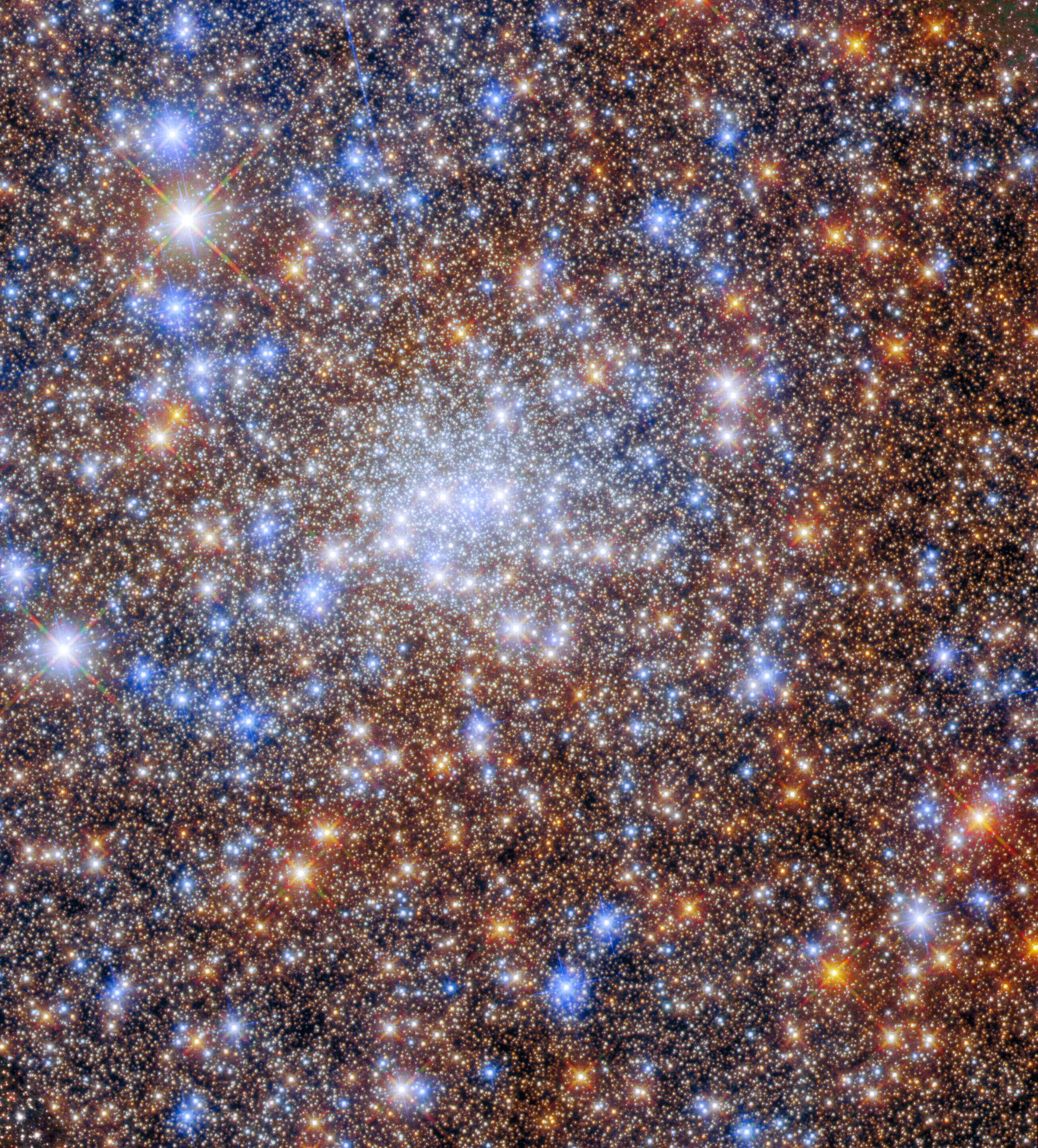 |
| Credit: ESA/Hubble & NASA, R. Cohen |
This NASA/ESA Hubble Space Telescope picture shows a sparkling swarm of stars in the globular cluster Terzan 4. Globular clusters are groups of stars that are held together by gravitational force and can include millions of individual stars. The center of a globular cluster, such as Terzan 4, is a densely packed, crowded field of stars, which produces beautiful views, as shown in this photograph.
Hubble's debut in 1990 transformed the study of globular clusters. Individual stars in these thick populations are nearly hard to discern with ground-based telescopes. Space telescopes, on the other hand, can distinguish between them. Astronomers used Hubble's sharp eyesight to analyze the stars that make up globular clusters, learning how these systems evolve over time.
This image was created using Hubble data to better comprehend the shape, density, age, and structure of globular clusters towards the heart of the Milky Way. Unlike other globular clusters in the sky, those near the galaxy's core have escaped extensive investigation due to the clouds of gas and dust that swirl around our galaxy's core. These clouds obstruct starlight and hamper astronomical measurements, a process known as extinction.
Astronomers used the sensitivity of two Hubble sensors, the Advanced Camera for Surveys and the Wide Field Camera 3, to compensate for Terzan 4's extinction. Astronomers were able to establish the ages of galactic globular clusters within a billion years by combining Hubble pictures with advanced data processing a reasonably accurate measurement in astronomical terms!



0 Comments